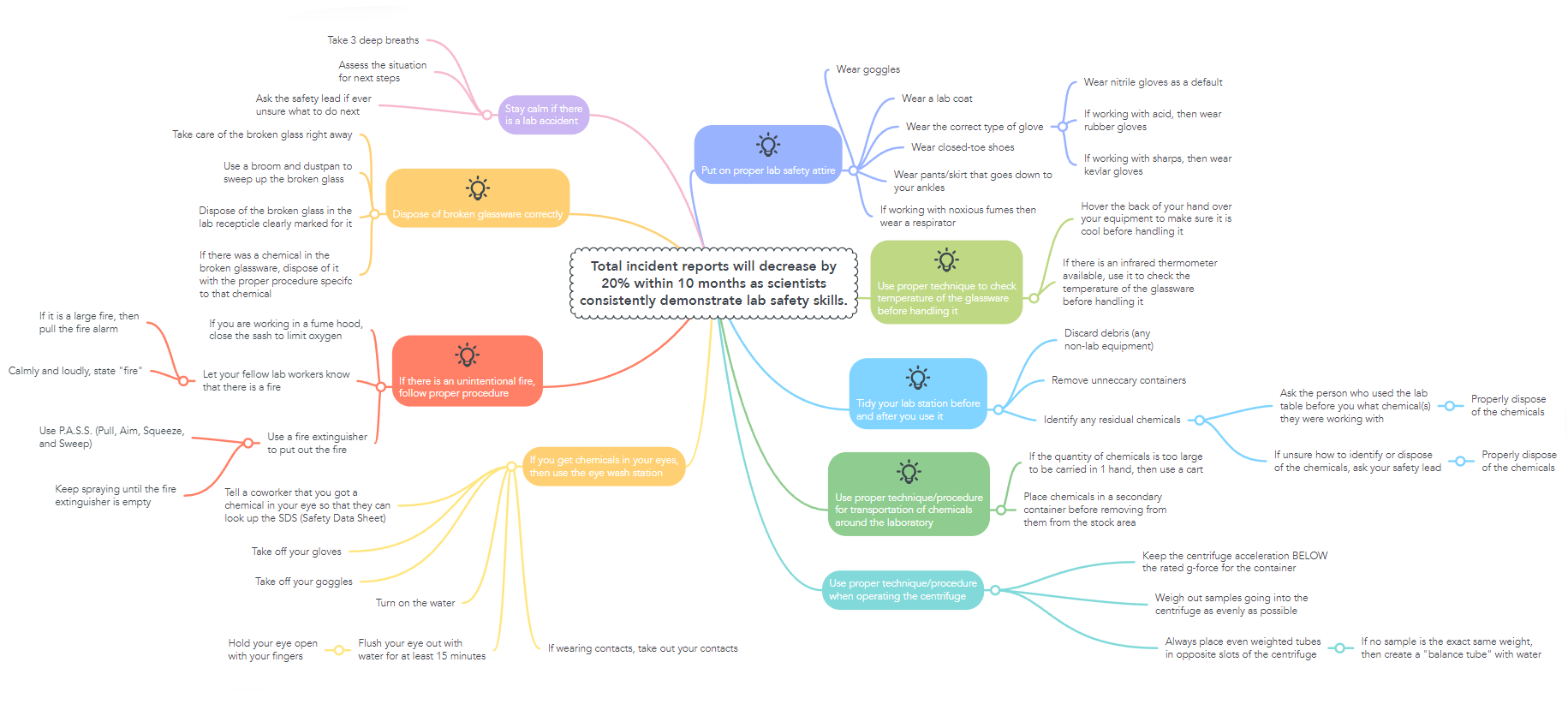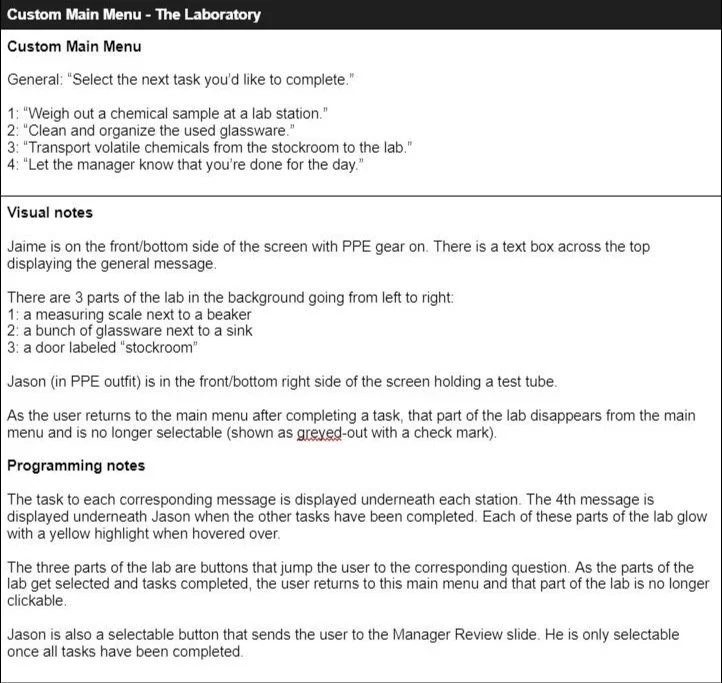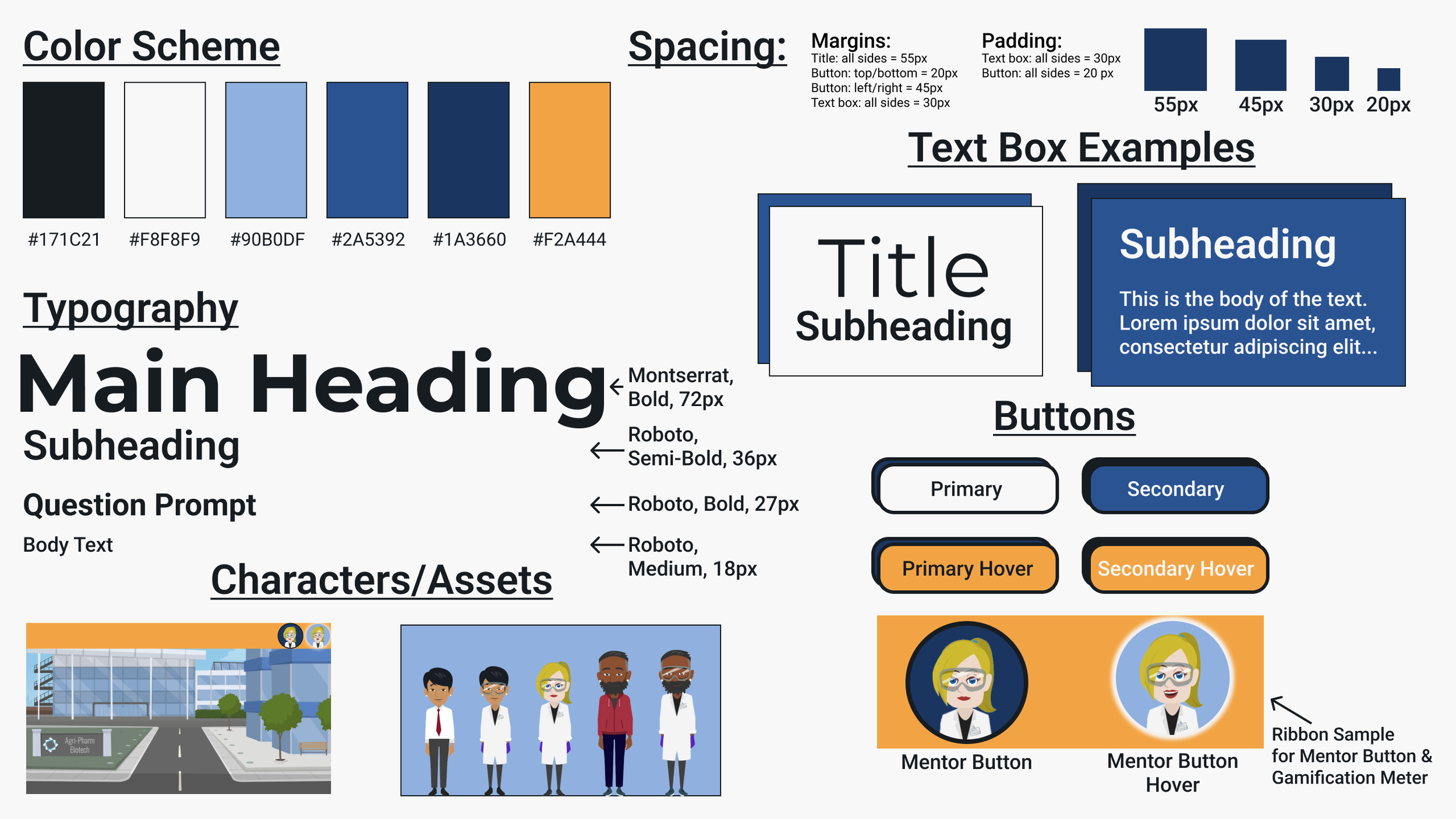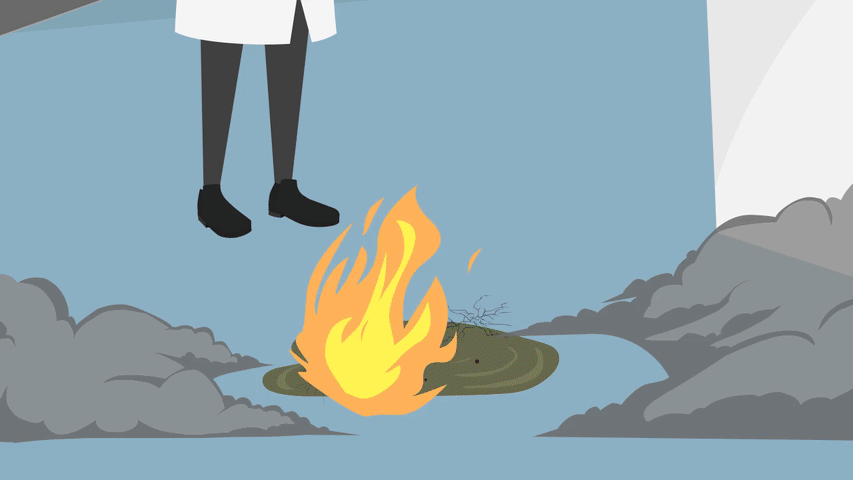Safety Skills for the Lab eLearning
Designed with Freepik
Geared toward new hires, this scenario-based eLearning concept project helps lab technicians and researchers make safe decisions during procedures that are often performed hurriedly.
Audience: Lab Technicians, Researchers, Chemists, New Hires working in a Laboratory
Responsibilities: Instructional Design, eLearning Development, Action Mapping, Storyboarding, Visual Design
Tools Used: Adobe Creative Cloud (Photoshop, Illustrator, Firefly, XD), Articulate Storyline 360, Figma, Google Workspace, Mindmeister, Vyond
The Problem
The client, a large pharmaceutical company, recently acquired a startup. After the acquisition, there was an expansion and mass-hire of researchers. In the months since, there has been a significant increase in material expenses, inconclusive lab results, missed deadlines, and lab accidents.
For this concept project, I was “hired” as a learning consultant to determine the performance problem and develop training to solve it. After performing a needs assessment, I found that the original startup had no existing safety training, nor did it have any procedures in place to address accidents.
The Solution(s)
Proper procedures for lab safety needed to be drawn up and disseminated to lab workers. I provided the client with multiple learning solutions, each with their own strengths and weaknesses. After weighing the options, the client chose the eLearning solution.
My Process
To kick-off the design phase, I created an action map working closely with an SME. The action map guided my development of the text-based storyboard with programming notes. From there, I created visual mock-ups in Figma, submitting these deliverables for feedback from stakeholders at each step of the process.
Incorporating the provided feedback, I then entered an iterative prototype development phase until the client gave final approval and the learning experience was polished.
Select a step of my process to jump to it:
Action Map
I worked with an SME who is the Safety Lead at their biotech company. Together, we created an action map with an attainable, measurable metric and broke it down into observable, actionable items. We then identified the high-priority issues:
What happens most frequently?
What has the worst consequences?
What will be most effective to meet our goal?
Text-Based Storyboard
I created a text-based storyboard to help organize the text for prompts, script for dialogue, and notes for visuals and programming.
Equipped with an action map and notes from the SME, I created a storyboard for the eLearning experience. Opting for a scenario-based eLearning, I wrote an immersive story centered around a character that would be presented with decisions and consequences similar to that of the learners’ day-to-day work.
To increase engagement with the content, I gave learners active choice and control with a custom main menu. The learner may decide in what order they wish to progress through the content. Purposefully keeping a conversational tone and verbiage, I created a mentor character to guide the learner through the experience with on-demand information.
Visual Mockups
Style Guide
Once stakeholders approved the storyboard, it was time to work on the visual design. I created a style guide for consistency in the look and feel of the project. I then created wireframes, refining these into full visual mockups using Figma.
Full Visual Mockups
It was easier to alter the visual elements in Figma than in Articulate Storyline. Creating these visual mockups, therefore, allowed me to quickly produce several iterations. Having the visuals pre-established saved time on editing during the actual build.
Interactive Prototype
A snapshot of the organized prototype overview
I started testing the interactivity of the experience by developing a prototype. The intention was to go through multiple iterations, collecting feedback on the functionality at each step of the process.
The prototype was constructed up to the first scenario-based question, including the custom main menu. Upon receiving notes from the client and SME, edits were made and development continued. Throughout the repetition of this process, every aspect was carefully labeled and organized to keep troubleshooting efficient.
Full Development
All notes, responses, and feedback from stakeholders culminated with an excellent final product. Here are some of the highlights:
The custom main menu allowed learners to choose their own path, had a dynamic background, and organized multiple interconnected parts into a flow with lively prompts and characters.
The “introduction question” presented an opportunity for users to become familiar with the interactivity before the custom main menu.
Animations provided moments of delight while staying true to the real world and eliciting strong emotional responses.
Results and Takeaways
This project further developed many of my ID skills, especially those in visual design. To create a more engaging learner experience, I wanted to incorporate animation. Learning to use Vyond animation software allowed me to create a captivating and aesthetically cohesive simulation.
Were I to approach this project again with more resources, I would expand in multimodality. I would use AI generative voices or voice actors for the characters, but still keep in mind accessibility with closed captioning. I would also like to track individuals’ performance more closely, creating a more accurate scoring system that provides multiple possible endings.
Overall, the course was well received among learners and fellow instructional designers.
Here are some testimonials, including one provided by the SME I worked with:
“This training is an imaginative and thoughtful way to remind lab workers of the important choices they make every day to keep themselves and others safe!”
“I wish all training could be this fun!”
“This interactive learning experience really shines when compared to all other safety training out there.”









